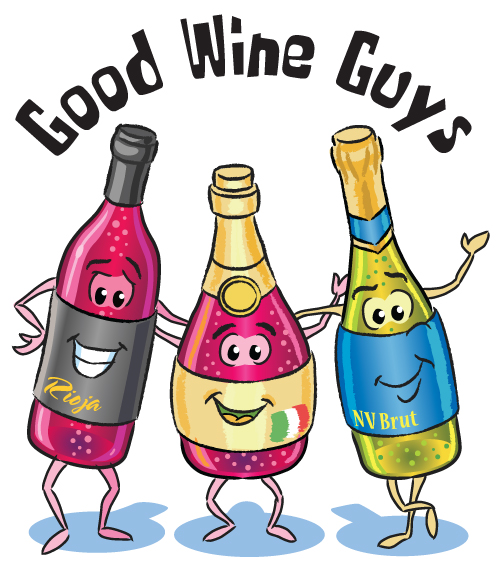No region of Spain is more associated with Spanish wine than Rioja, and the prominent grape Tempranillo. This oaky marriage was the first region in Spain to be granted a DOC. Recently other Spanish wine regions have thankfully made their mark, but you cannot talk about Spanish wine without Rioja.
Brief History
The Romans started wine making in the present day Rioja around 2 BC, give or take. Romans tended to see if wine could grow in every place they conquered, so hats (or helmets?) off to them for keeping priorities in order.
Around 1100 AC, Rioja was solidifying itself as a major wine region. (Something tells me back then that few people spit out the wine they were wine tasting). Like most of Western Europe at the time, State, Church, and business formed a 3 headed coin. The Church and monks of the region were heavily involved in the wine industry, as well as unifying the Spanish (or more properly stated Castilian) language. Rioja continued to grow in prominence, and some wine owners from Rioja helped finance New Word Exploration.
Prosperity continued, but a big turning point for Rioja had its origins in the Americas. Like many things, the problem and the solution come from the New World. The phylloxera plague had its origins in the Americas, and dealt a heavy blow to French vineyards in the late 1800. It destroyed much of the vines in Bordeaux and Rhone wine regions. French winemakers, in particular those from Bordeaux, were forced to regroup and rethink their options as the plague deviated their crops and their livelihood. Many came to the relatively close Rioja region to lick their wounds and forge a new plan. They brought with them some new wine making techniques (oak barrels should be named), as well as money to buy and export Rioja wines back to France. It was discovered that adding Americas vines to the local vines proved to be effective in battling the plague. Problem under control. So as stated earlier the problem and the solution came from New World.
Success would not last, as two World Wars with a Civil War in between proved to be a bit of a buzzkill on the Spanish wine industry. After the Civil War came the Franco dictatorship. “Growing wine industry” and “dictatorship” are words not often found in the same sentence. In fact this may be the first known example. As Franco passed and Spain opened up in the 1970s, everything and everyone looked outward. Rioja looked at how to make their wines more marketable, with success and failures. New bodegas in Rioja sprouted up, IN the 1970 DOC.
This newfound openness did not apply to just Rioja. Other Spanish regions, namely Ribera de Duero, grew as well. Competition is a good thing as both regions started producing better wines.
Rioja is dominated by mountains and wind. Good for soil and terrier, not great for the skin.
Sub Regions – Rioja is divided into 3 regions – Rioja Alta, Rioja Oriental (formerly Baja), and Rioja Alavesa. Rioja Alta produces the classic, Old World wine we all think of when you think of a Spanish wine.
Grapes – Rioja and Tempranillo are almost synonymous. Most Riojas will be 100% Tempranillo, but some may have been blended with Garnacha, Mazuelo, and Graciano.
Tempranillos are elegant, but more flowy than other noble grapes such as Cabernet, Sangiovese, and Nebbiolo. Riojas and tempranillos pack more of a punch.
Terrier. Chalk, oak, plum, and vanilla are often used to describe Rioja wines. I prefer tasty, a bit brooding, easy to pair, and even easier to get a buzz on. One aspect of Rioja wines I find is their fantastically long finish. After swallowing the taste does not quickly disappear. It lingers like a delicious sedative.
Rioja are classified like many European wine by the time spent aging –
Crianza – at least 2 years, Reserva at least 3 years, Gran Reserva -at least 5 years
An easier way to think of this is –
- Crianza – open up and drink by the glass or with food. Paris well, medium wine
- Reserva – can save, should breathe a bit before you drink it, probably best enjoyed with food.
- Gran Reserva – think about saving it, more of a special occasion wine Needs to open and breath and enjoyed with hearty food (lamb, roasted pork, and oxtail come to mind).
EveryDay
- Montecillo Crianza – established 1874 or so. Still a crowd pleaser
- Marques de Caceres – easier to find than a blue shirt. Mass produced but good.
- Lopez de Haro
- Cune Crianza- helped establish the Rioja region in the late 19th Century. The name is a misspelling / play of CVNE – Compañia Vinicola del Norte de España. Great wine!
A Bit better
The Reserva of any of the above
- Beronia – oh so good. More modern vineyard.
- Torre de Ona by La Rioja Alta Finca San Martin Crianza
- Haciendo Lopez de Haro
Something special (Let it Breathe / Save)
- Muga – as classic as they get. Side note – Muga rose is great
- La Rioja Alta Vina Ardanza Reserva
- R. Lopez de Heredia Rioja Viña Tondonia – what they serve in heaven.
